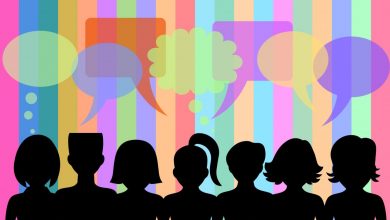
How best to communicate in diverse teams
Originally posted on The Horizons Tracker.
When it comes to teams there can often be a trade off when it comes to diversity. It’s fairly well established that diverse teams are more innovative as they’re able to draw on more unique experiences. It’s equally well established however that teams with less diversity tend to be more united.
This is because such teams understand each other better and are therefore more unified. Being able to reach a consensus among a diverse group is therefore hugely important, and a new study1 from the University of Michigan sheds some light on how this can be achieved.
It’s commonly thought that text-based communication is the best way as it allows the diversity of the group to be played down, but the study suggests things aren’t quite as simple as that. Whilst this can work, it depends on the kind of diversity in the team.
For instance, if teams are racially diverse, communication via text was more effective for things such as knowledge sharing and decision making. When teams were diverse along gender lines however, text based communication had the opposite effect.
Effective communication
The team believe that text isn’t as effective at cross gender lines is that the virtual environment has not always been a friendly one for women, with this especially so when it comes to decision making. They believe this has resulted in women being less inclined to participate.
“What we began to see is natural tendency for men to be more aggressive. Women are more polite than men online, so that impact is heightened in decision-making settings,” they explain. “Men are tone-deaf in general but are worse online. They become more aggressive, more rude. Women pick up social cues online.”
This isn’t the case with race however, with it tending not to be a factor online, which makes virtual messages carry more weight in racially diverse groups. Indeed, digital messages can remove the visual and vocal cues that so often lead to stereotypes forming and people not being judged on their merits.
Media synchronicity
The project builds upon previous work on media synchronicity theory, which have tended to focus on how global teams communicate knowledge and integrate that knowledge into decision making, despite having team members spread around the globe.
Previous studies have also shown that racially diverse teams can often struggle in face-to-face settings as some participants feel their contributions aren’t valued enough. These barriers tend to vanish when communication is made virtually.
The study suggests that we should consider the diversity of our teams when considering the most effective way for them to communicate with one another. It might also be beneficial to provide training to highlight some of the issues and biases that have emerged in the study.
Article source: How Best to Communicate in Diverse Teams.
Reference:
- Robert, L., Dennis, A., & Ahuja, M. (2018). Differences are Different: Examining the Effects of Communication Media on the Impacts of Racial and Gender Diversity in Decision-Making Teams. ↩






